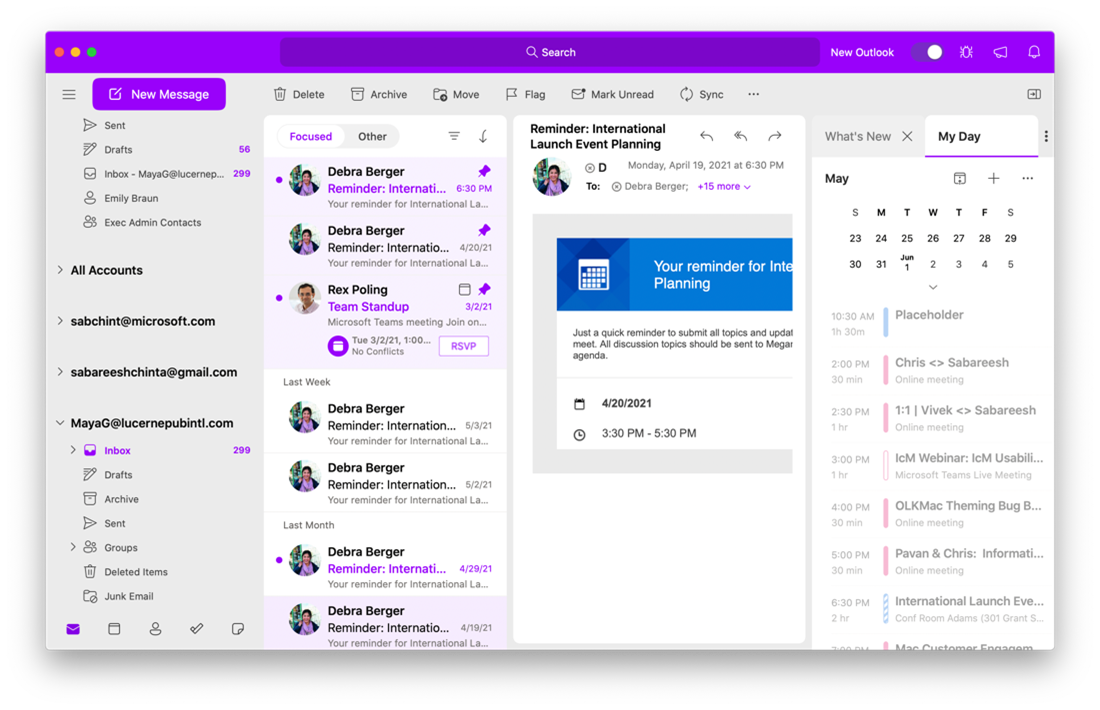

This could be quite simple, such as matching the sender to an exact address, but you have a lot of options to choose from. The Advanced tab allows you to select any field from anywhere in Outlook, and select a condition that you want to match. Switch over to the “Advanced” tab, and you can create complex conditions. It’s a particular size, greater or smaller than a particular size, or between two sizes.

The text you’re searching for needs to match the case.It’s been flagged by you, by someone else, by no-one, or marked as complete.It’s marked as high, normal, or low priority.It’s been assigned a particular category.Here you can choose to match a message on whether: Back in that Filter window, you can switch over to the “More Choices” tab to see a bunch of additional conditions you can pick. This is just a simple example-you can add lots of conditions, even very complex ones. You can see below that messages meeting our conditions are now bold and purple. Set yours up however you want, click the “OK” button, click “OK” again to close the Conditional Formatting window, and then one more time to close the Advanced View Settings window. We’re going to make messages that match the filter we set up be displayed in purple and bold. Click “OK” when you’re done.īack in the Conditional Formatting, click the “Font” button. Then we add “Outlook” into the “Search for the word(s)” field, making sure that the “Subject Field Only” option is selected from the “In” drop-down list. To do this, first click the “From” button, which opens up the address book, and select a contact. We’re just going to use a simple example here and have it look for messages that were sent by “Rob Woodgate” and contain the word “Outlook” in the Subject field. The Filter window lets you decide on the condition, or conditions, that the mail has to meet to be formatted. Give your rule a name and then click the “Condition” button. A new rule called “Untitled” will be added to the list. In the Conditional Formatting window, click the “Add” button. You can turn default rules off though, by unchecking them in the “Rules for this view” list. You can’t delete default rules, or move the order around, or change the conditions for the rule. With the default rules, you can only change the font. If a message meets the conditions of both rules, the font will be changed to green because that rule is higher up on the list-the rule which sets the font to red is ignored. How does this work in practice? Let’s say you have two rules, one at the top of the list that changes the font to green, and one lower down in the list that changes the font to red. Rules higher up on the list take precedence over rules lower down. Outlook applies rules in order from the top of the list. When that rule is activated, Outlook uses the bold, blue, 11-point Segoe UI font to display it.

In the default rules, for example, the “Unread Messages” rule is activated when a message is marked as unread. The “rules” are the conditions that a message has to meet for Outlook to apply the formatting. For example, you can see that “Unread messages” are displayed in bold, blue Segoe UI font with a size of 11 points. The items displayed in the “Rules for this view” list are the default rules that come with an un-customized folder view. This brings you to the Conditional Formatting window that you’ll be using to set up different rules for how messages are formatted.


 0 kommentar(er)
0 kommentar(er)
